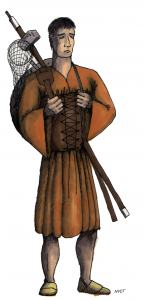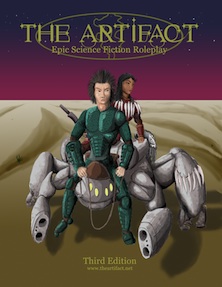 I mentioned that I would take the posts on food in survival games and put them together into a whole concept so here it is. This post is going to take carrying food, rationing and foraging and work them into one system for reference. I’ve talked about why I went with the numbers in the earlier posts so if you’re reading this and want to know why something is working the way it is, here are some links that will explain.
I mentioned that I would take the posts on food in survival games and put them together into a whole concept so here it is. This post is going to take carrying food, rationing and foraging and work them into one system for reference. I’ve talked about why I went with the numbers in the earlier posts so if you’re reading this and want to know why something is working the way it is, here are some links that will explain.
Foraging Carrying Food Rationing
One of the core concepts of making something fun is being able to win. Without the proper mechanics to deal with food problems, the tests all become an issue of loosing. That is to say, running out of food. To fix this, any RPG food theory has to have an element of choice and the possibility for the players to improve their situation.
Food Units
When traveling, the main concerns about food is, how much can the characters bring with them and how fast do they eat it? For simplicity, it is usually best to deal with food in the number of days the characters can sustain themselves so we will use days of food as a unit. However it will also be necessary to break those days up into meals and even half meals when rationing. For our purposes, there are three meals to every day of food and two half meals for every meal.
Traveling
A character can comfortably carry four days of food. This usually takes up one third of their encumbrance if your game uses it. If the player chooses they can carry more food in their packs and make their supply eight days but the food takes up two thirds of their packs. The GM should severely limit what items they can take with them at this point, only allowing for two large items like a two man tent and a sleeping bag (or items of like size) or ten small items like drinking cups and candles. A character can carry up to twelve days of food but they cannot carry anything else.
This assumes that the characters will be packing food that is lightweight and as calorie dense as is possible. This does require specific knowledge of foods. If the GM wishes to make a skill for this that may allow the players to pack slightly more food in their packs it adds to the players enjoyment of the task. They get to “win” by putting out effort and doing better than the baseline. Any extra food would be on the meal or half meal level instead of days of food.
Rationing
The figures I’ll give here are for The Artifact RPG because rationing has to have an effect on the characters to make it a choice that the players have to think about. To modify it to your system you can read my reasoning on the subject in the Rationing Mechanics post.
When the players decide to ration food to make it go further, it will have an impact on the characters. Characters can comfortably live off five half meals a day (just under three full meals a day). If they ration under those five half meal, they get a -1 CDF to CON for every half meal missed. This minus builds each day until it is offset by eating more food and getting positive CDFs to offset the deficit. If they eat more than five half meals, they get a +1 CDF to CON for that day for every half meal they eat. For every extra half meal over six, the character must roll against their CON to see if they can eat it. Once they fail this CON roll they cannot eat any more for the day.
If the characters CON CDF minus effectively brings their CON to zero, every two days they will loose one Hit Point if they do not bring their CON CDF up.
Foraging
Characters may forage for food and water to offset what they need to bring with them. A skilled forager can find enough food for a day in a matter of hours while a novice forager may only find a half meal a day.
For every two hours of foraging or each Surmount Point they pass, the player may roll against the character’s foraging skill. Use the table below to determine how many half meals the character finds.
| Full | 1/2 | 1/4 | 1/8 |
| 1 | 2 | 4 | 6 |
However not all environments are the same and many harsher environments will have a difficulty modifier for the foraging roll.
Dessert -50
Tundra -40
Plains -30
Winter Forest -30
Swamp -20
Forest -0
Jungle +10
Urban +10 (lots of food in garbage and dumpsters)
Another aspect of foraging is that some of the food may be unfamiliar to characters not native to the environment and not accustomed to foraging. Foraged food can include bitter roots, insects and in an urban environment food taken from the trash. To a character without a foraging skill, they must make a PSY roll (or generically willpower) to be able to eat the food.
Conclusion
In a game about survival, food and water are critical elements of the tension of a story. If the game is not about survival, this is all unnecessary complexity. Make sure the survival aspect of the game is important to your story before using these rules or they will only slow down play. Conversely, if it is important, give the players time to think about their choices and make it part of the story.


 The Free RPG Blog
The Free RPG Blog